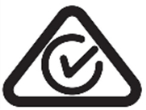Safe use and selection of a portable generator
Energy Safe Victoria provides the following advice for households who are without power and using generators.
Selecting a generator
Generators have a variety of capacities and come in different sizes.
The most common are:
- 750 - 1000 Watts: This is small in capacity and can run a small amount of equipment such as:
- Computers
- mobile phone chargers
- a small bar fridge and camping style LED lights.
It is not suitable to run a small kettle or toaster.
- 2000 Watts: This is mid-range in capacity and can run a standard domestic type fridge, microwave or a kettle. It may be unable to run all three at the same time.
- 5000 or 8000 Watts: This is large in capacity and can run the same equipment as above and have additional capacity for equipment such as a second fridge or freezer, an oil filled heater and a kettle or toaster.
Generators are built to a specific Australian standard, which can be easily identified on the generator. Look out for the symbol above, called the Regulatory Compliance Mark, also known as the RCM.
Using a generator
Portable generators must be used with care as they pose safety risks including electrocution, fire or asphyxiation when not used correctly.
Please follow this safety advice to manage the risks associated with the use of portable generators during power outages:
- To connect household equipment to the generator: plug in an extension lead and then use a double adaptor or power boards to connect other equipment such as a fridge.
- Never modify your house wiring to accommodate a generator. Any changes to household wiring must be carried out by a licensed electrician.
- A generator should only be used outside, in a well-ventilated area.
- Portable generators should never be used indoors or in enclosed areas. They emit carbon monoxide that you cannot see or smell, and may cause carbon monoxide poisoning and asphyxiation very quickly, and death.
- Generators are designed to be operated outdoors. It is recommended that the generator is located outside in a well-ventilated area sheltered from the weather, such as a carport. When setting up your generator ensure that you:
- place the generator on flat ground
- ensure the exhaust is not blowing onto flammable or combustible materials, or back into the house
- choose a location that offers some protection from the weather such as a carport, under the eaves or veranda
- do not cover the generator as the exhaust is very hot and will burn any material in direct contact with it and cause a fire
- follow the generator instructions on how to fill the fuel correctly:
- Always ensure the generator is off and has cooled down before re-fuelling
- Be conscious not to spill fuel as the hot exhaust can ignite the fuel
- Do not smoke near the generator, and extinguish any naked flames before refuelling.
- Only use heavy-duty extension cords that are in good condition and rated in watts or amps at least equal to the rating of the generator.
- Protect connection points between extension cords and appliances from the weather. There are many products readily available such as a safety box, like the one below:
- Never try to power the house by connecting the generator into a wall socket or switchboard, unless there is an existing dedicated generator inlet. This can result in back-feed that can risk the safety of utility workers and neighbours in other words, those connected to the same local network. Any modifications to an electrical installation should only be made by a licensed electrician.
- Ensure fuel is stored in proper safety containers and away from ignition sources (for example a gas water heater).
Download the information sheet
There are translated versions of this page in community languages - see Energy safety during floods
Who we are
Energy Safe is Victoria’s safety regulator for electricity, gas and pipelines. Our role is to ensure Victorian gas and electricity industries are safe and meet community expectations. We are also responsible for licensing and registering electricians, and educating the community about energy safety.
Contact us
Energy Safe Victoria
Phone: 03 9203 9700 or 1800 800 158 (freecall)
Email info@energysafe.vic.gov.au
More information is available on the Energy Safe Victoria website
Date: 19/12/2025 13:32
The currency and accuracy of this information cannot be guaranteed once printed or saved to a storage device. If in doubt, please check the Energy Safe Victoria website for the current version.
Reviewed

